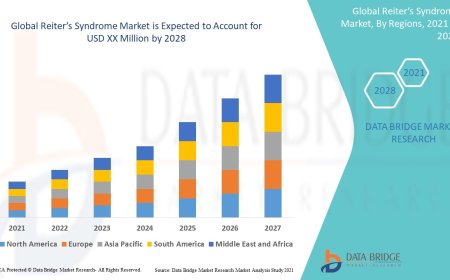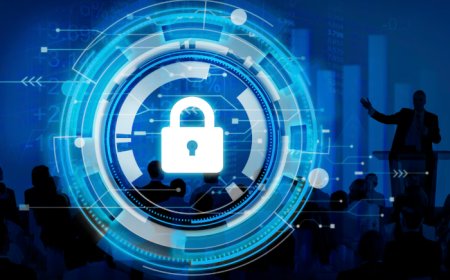How Deception Supports Proactive Threat Detection
Cyber deception turns the tables on attackers by creating an environment filled with traps, decoys, and false data that lure malicious actors and reveal their tactics early in the attack lifecycle.

In todays complex and rapidly evolving cyber threat landscape, organizations can no longer rely solely on traditional reactive security measures. The shift toward proactive threat detection is essentialdetecting adversaries before they can cause real damage. One of the most promising technologies enabling this proactive approach is cyber deception.
Cyber deception turns the tables on attackers by creating an environment filled with traps, decoys, and false data that lure malicious actors and reveal their tactics early in the attack lifecycle. This blog explores how deception technology supports proactive threat detection, its key components, and why its becoming a critical pillar in modern cybersecurity strategies.
What Is Proactive Threat Detection?
Proactive threat detection refers to identifying and mitigating threats before they can exploit vulnerabilities or cause harm. Unlike traditional reactive methods that respond only after an incident occurs, proactive approaches focus on early indicators of compromise (IOCs), behavioral anomalies, lateral movement patterns, and threat actor reconnaissance activities.
To achieve this, security teams must go beyond logs and alerts and actively hunt for threatsand this is where deception shines.
The Role of Deception in Proactive Detection
Cyber deception involves deploying realistic but fake assets (such as decoy servers, credentials, applications, or files) throughout an enterprise environment. These assets are indistinguishable from real ones to an attacker, making them ideal for detecting malicious behavior early and without false positives.
Heres how deception enables proactive threat detection:
1. Attracts Attackers Before They Reach Real Assets
Deception lures attackers into interacting with fake assets. Since legitimate users have no reason to interact with these decoys, any activity is suspicious by default. This allows security teams to identify threats before attackers can access critical systems or data.
2. Uncovers Lateral Movement
Once an attacker breaches a perimeter, they often move laterally within the network to escalate privileges or locate valuable targets. Deception technology scatters decoy credentials and systems across the environment, which trap attackers mid-move, giving defenders visibility into their methods and intentions.
3. Reduces Dwell Time
By catching threats earlier in the kill chain, deception reduces the average dwell timethe period attackers remain undetected inside a network. This early detection significantly limits the damage an attacker can do.
4. Provides High-Fidelity Alerts
One of the biggest challenges in security operations is alert fatigue caused by false positives. Deception-generated alerts are context-rich and highly accurate, since real users never interact with decoys. This allows security analysts to focus on genuine threats without distraction.
5. Supports Threat Hunting and Forensics
Deception environments can safely record attacker behavior in real time. Security teams can study these interactions to gain deeper insight into tactics, techniques, and procedures (TTPs), feeding this intelligence back into detection and response strategies.
Key Components of a Deception Platform
A modern deception platform typically includes:
-
Decoy Systems: Fake endpoints, servers, databases, and IoT devices that mimic real infrastructure.
-
Lure Artifacts: False credentials, network shares, or URLs embedded in legitimate systems to guide attackers to decoys.
-
Breadcrumbs: Hints left on legitimate systems (like registry entries or documents) that lead attackers to traps.
-
Engagement Server: Central management system for deploying decoys, monitoring interactions, and analyzing captured data.
-
Threat Intelligence Integration: Feeding insights from deception engagements into SIEM, SOAR, EDR, and TIP platforms for broader visibility.
Real-World Use Cases of Deception for Proactive Detection
a. Insider Threat Detection
Deception can expose insider threatswhether malicious or negligentby revealing attempts to access or misuse fake internal resources.
b. Advanced Persistent Threats (APTs)
Because APTs often involve stealthy, long-term campaigns, deception can be instrumental in revealing their reconnaissance and lateral movement phases early on.
c. IoT and OT Environments
Decoys mimicking industrial control systems (ICS) or IoT devices can detect unauthorized probing or manipulation attempts in environments where traditional monitoring is difficult.
d. Credential Theft and Abuse
Placing false credentials in memory or password managers can alert defenders when these are harvested and used, indicating compromise.
Benefits of Deception in a Proactive Security Strategy
-
Minimal False Positives: High confidence in alerts due to zero legitimate interaction with decoys.
-
Faster Detection and Response: Shrinks attacker dwell time and accelerates investigation and containment.
-
Cost-Effective: Requires minimal infrastructure changes and integrates with existing tools.
-
Adaptive: Automatically adjusts based on changing environments and threat landscapes.
-
Threat Intelligence Enrichment: Collects real-world attacker behavior for better-informed defenses.
Challenges and Considerations
While deception technology is powerful, it must be deployed strategically:
-
Realism is Critical: Decoys must be indistinguishable from actual assets to be effective.
-
Continuous Tuning: Deception layers should evolve to reflect changes in the environment.
-
Integration with SOC Tools: To maximize value, deception should feed into the broader threat detection and response ecosystem.
Conclusion
Cyber deception platform is not just a defensive toolits a proactive weapon. By turning the environment into a minefield for attackers, deception gives defenders the upper hand. It delivers real-time threat visibility, precision alerts, and intelligence that enhances every layer of the security stack.
In a world where stealthy adversaries are constantly innovating, deception offers a powerful way to stay one step ahead. For organizations seeking a proactive, intelligence-driven approach to cybersecurity, deception is not optionalits essential.







































